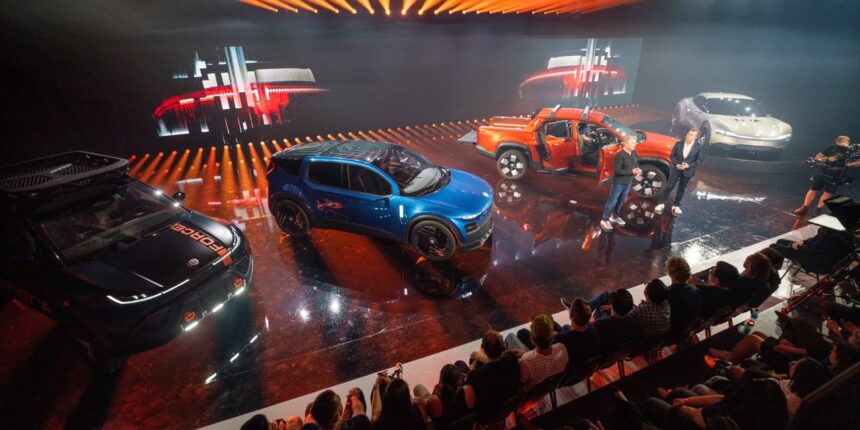Shares of Fisker Inc. dropped 6% Friday after the electric-vehicle maker reported a narrower-than-expected loss but revenue and EV production that missed Wall Street expectations, and it also lowered its full-year production outlook.
Fisker
FSR,
started deliveries of the first Fisker Ocean electric SUV and said it was making “positive profit margin” on the first vehicles sold.
The EV maker late Thursday unveiled three new concept EVs that it hopes to bring to market starting in 2025: The Ronin, which the company called an “ultra luxury sports car” with limited production and starting around $385,000; the Pear, Fisker’s $30,000 electric crossover that was already in the works; and the Alaska, an electric pickup truck starting at $45,400 that also had been teased before. The company launched the Ocean last year.
Fisker’s slower-than-expected third-quarter production ramp and larger-than-expected 2023 production cut “will detract today from what was an impressive product reveal last night,” said Chris McNally, an analyst with Evercore ISI.
McNally said he had “hoped” Fisker would show clear signs of production of about 6,000 units a month production by late September, but that goal looks to be postponed until later in the year.
Fisker’s net losses narrowed to $85.5 million, or 25 cents a share, from $106.0 million, or 36 cents a share, in the year-ago period. That beat the FactSet per-share loss consensus of 30 cents.
Revenue was $825,000, up from $10,000 a year ago but below the FactSet consensus of $20.7 million.
Fisker said it produced 1,022 EVs in the second quarter, well below the company’s guidance of 1,400 to 1,700 vehicles, but said it produced 1,009 vehicles in July. For 2023, the company cut its production guidance to 20,000 to 23,000 units from 32,000 to 36,000 vehicles, while raisings its estimate for adjusted operating expenses and capital expenditures to $565 million to $640 million from $535 million to $610 million.
The new production guidance is about 7,000 vehicles lower than what Evercore expected, McNally said. On the brighter side, Fisker reiterated their 2023 gross margin guidance of 8% to 12%, “highlighting the power of contract manufacturing,” the analyst says.
Unlike other EV makers, Fisker contracts out most of its EV manufacturing, keeping in-house design and consumer-interface aspects of EV making, a strategy that has won Fisker the moniker of “the Apple of autos” on Wall Street.
Fisker’s stock has gained 9.1% over the past three months through Thursday, while the Global X Autonomous and Electric Vehicles ETF
DRIV,
has rallied 21.9% and the S&P 500
SPX,
has advanced 10.9%.








